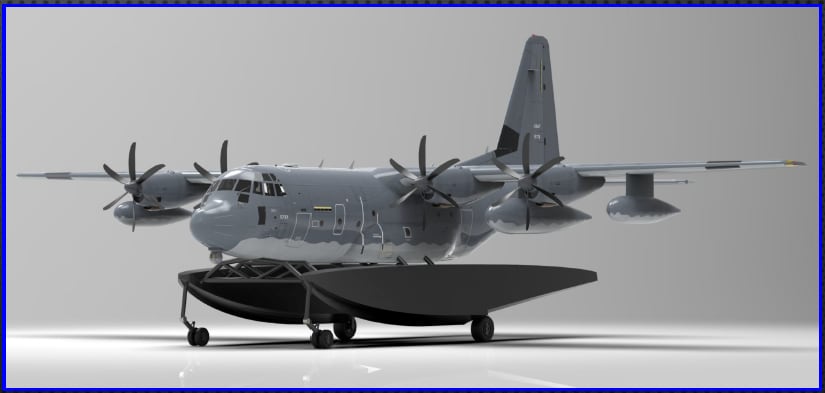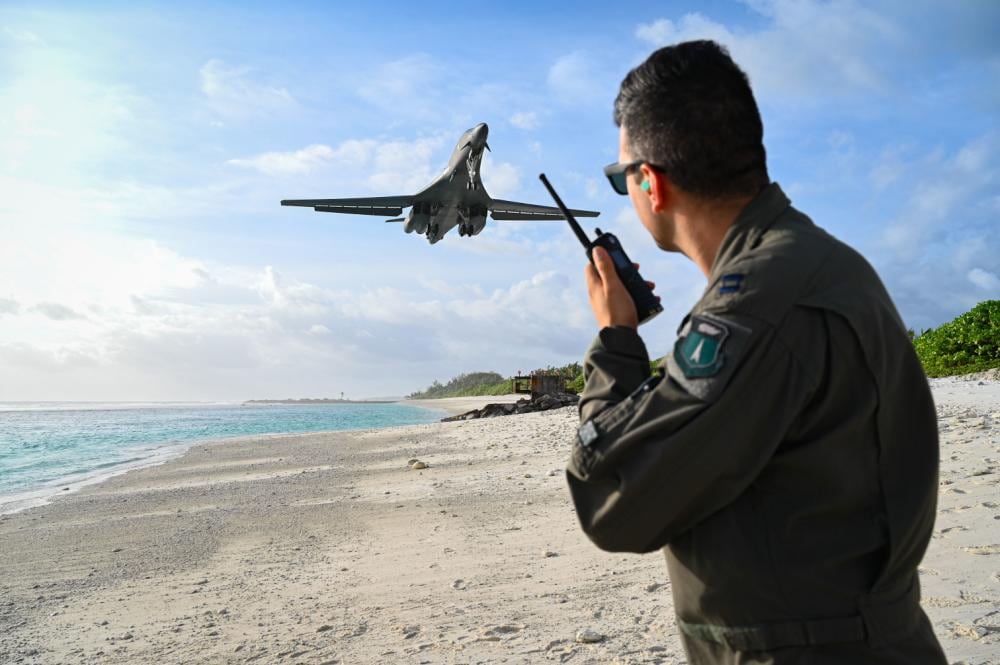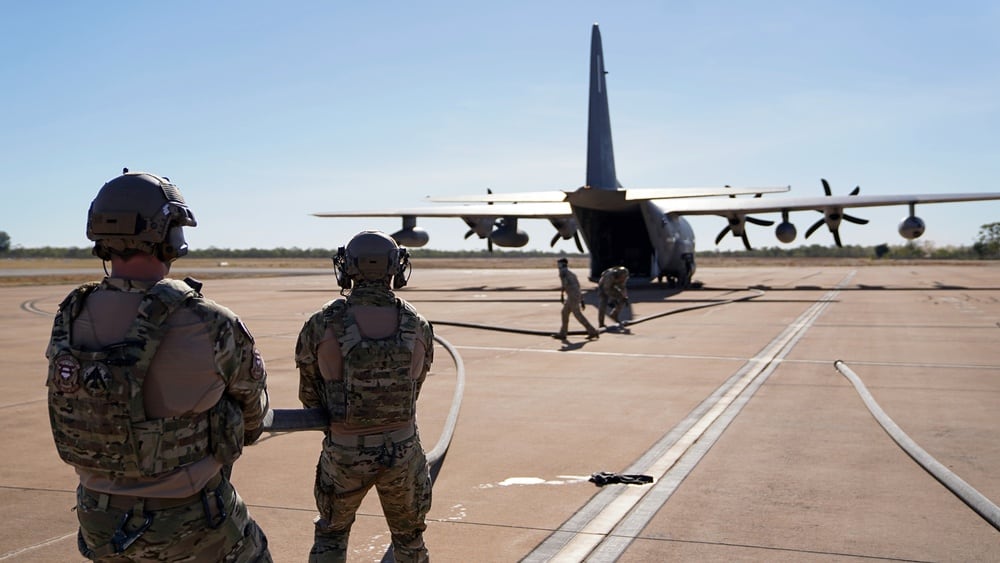The Air Force is preparing for a new era in maritime operations, taking on a larger role in surface warfare as the U.S. casts a wary eye at China and Russia.
The Pentagon has discussed bolstering its abilities in the Pacific for years, and the military is no stranger to air operations in the region. But the push toward more cohesive joint warfare has spurred a greater focus on anti-ship tactics and weapons in the Far East and beyond for the first time since the Cold War ended.
The Joint Direct Attack Munition is one piece of a growing arsenal of munitions the Air Force is testing across multiple aircraft for surface warfare, or going after ships.
First Lt. Lindsey Heflin, a spokesperson for the 53rd Wing at Eglin Air Force Base, told Military Times in September that during a test in August, an F-15E used a specially developed GBU-31 — along with new tactics — on a moving ship. It was part of a program to create a weapon sensor that can more precisely target surface ships and a warhead tailored for maritime use.
The 2,000-pound warhead, combined with the JDAM tail kit’s navigation system, allows the Air Force to vet technology that can replace the Paveway III bomb as the service’s primary anti-ship weapon.
The Air Force plans to add the new seeker and warhead to longer-range weapons in the future, Heflin said. During the test, airmen also hashed out fresh tactics that fighter pilots would need to successfully launch an airstrike against an aircraft carrier or other seafaring vessels.
Researchers plan to continue testing the idea over the next couple years, and hope to turn it into a full-fledged program in fiscal 2024, Heflin said Oct. 29.
The August experiment followed another maritime test of JDAMs last year, dropping them from the B-52H Stratofortress bomber.
Bombers are typically the go-to option for waging a maritime war from the air, given their ability to strike targets from long ranges and to fly farther without needing to refuel. They routinely deploy to the Indo-Pacific and to Europe on short-notice “task force” missions to make their presence known without committing long-term resources to an overseas base.
The B-1B Lancer bomber in 2018 became the first — and so far, only — Air Force jet to carry the new Long-Range Anti-Ship Missile, a precision-guided Navy munition that can destroy specific targets within a group of ships at sea.
Lancers are able to carry 24 LRASMs at a time, offering considerable firepower in a single airframe, plus more flexibility than a submarine in places like the Black Sea.

“The rise of near-peer competitors and increased tensions between NATO and our adversaries has brought anti-ship capability back to the forefront of the anti-surface warfare mission for bomber crews,” said Lt. Col. Timothy Albrecht, a bomber task force planner at Germany’s Ramstein Air Base, in a June 2020 press release.
The Air Force has also tried out the AC-130W Stinger II gunship and A-10 Thunderbolt II attack plane in less-challenging maritime security scenarios in the Middle East, such as fending off speedboats meant to imitate the Iranian navy.
New surface warfare tactics are under wraps, but there’s plenty for the Air Force to learn from the Navy — particularly on how to use the right target-seeking technologies for hitting moving targets from afar, said Bradley Martin, a retired Navy captain who is a senior military policy researcher at the federally funded think tank Rand Corp.
“The air defense environment is going to be very challenging,” he said of surface warfare in European and Pacific waters. “It’s not necessarily learning anything new as far as tactics, but there’ll be a greater emphasis on coordination.”
The Air Force hasn’t often needed to detect a maritime threat, target it and call on someone who can launch an attack, whether with a munition or in the digital realm, said Russ Handy, a senior adviser at the Roosevelt Group who retired as an Air Force lieutenant general in 2016.
Handy served as the top officer at 11th Air Force, NORAD’s Alaska region and, briefly, as PACAF’s interim commander. The 11th provides combat forces to defend Alaska, Hawaii, Guam and elsewhere in the Indo-Pacific.
RELATED

“There are unique differences to a ship in the middle of nowhere,” Handy said. “We need to probably have a good and better understanding of the threat that the ships present to us. We’re very, very used to operating offshore and against those types of threats, but those ships that we’re targeting have potentially very, very lethal threats as well.”
He argues that rather than replicating the Navy’s expertise in the Air Force, USAF should rely on naval technology and prowess to find targets before conducting an airstrike. They’ll also need navigation options that can survive a GPS outage or other communication failure.
Success will depend on how quickly and how well the Pentagon can pull together a vast network that allows troops from any military branch to share information, known as joint all-domain command and control.
For instance, the Navy could identify a carrier or troop transport ship that may threaten U.S. or allied forces, then send targeting data directly to an Air Force jet tasked with investigating or attacking.
Michael O’Hanlon, a foreign policy expert at the Brookings Institution, isn’t impressed so far by the Air Force’s venture back into surface warfare.
“Having a slightly better munition for the final 50 or 100 miles of the kill chain is … a very evolutionary and modest change,” he said.
He cautioned against focusing on long-range strike planning alone. That’s a sound approach for operations in the South China Sea or to defend Taiwan against Chinese aggression, he said, but not necessarily for helping other allies.
“Our obligations in the Pacific still begin with, in many ways, Japan and Korea,” he said. “Those are not really problems of long-range strike or maritime strike, so much as their problems of defending, especially in the case of Korea, the territory of a traditional ally against traditional overland attack.”

O’Hanlon argues the Air Force needs to think bigger if it wants to be a formidable maritime power. For example, he said, the U.S. hasn’t pursued big, mobile offshore bases. And while the B-21 Raider bomber will be stealthier and more advanced than earlier designs, it doesn’t reflect an entirely different way of war.
“It’s not like we’ve figured out how to really deliver major amounts of combat power in a new way or in a new place,” he said.
So far, the Air Force is focusing much of its attention on questions of basing and access in regions where communications may be jammed and aircraft could be kept at bay.
It’s leaning on flexible mission planning, as well as the bomber task force rotations and a push to train airmen in skills outside of their normal routine, to keep adversaries guessing. It also helps avoid amassing people and resources at bases that could be vulnerable to attack.
That has meant more discussion of Guam, the island of Diego Garcia, the Northern Mariana Islands and elsewhere as potential staging areas for operations further afield.
Pacific Air Forces boss Gen. Kenneth Wilsbach told Air Force Times he’s not concerned about the effects of climate change, such as sea level rise and hurricanes or typhoons, on the long-term ability to use those sites.
RELATED

“We use informed decision-making and take all due consideration for how variables like climate can affect our mission, plans or capabilities,” he said. “We then put our forces into the best situation to disrupt an adversary or competitor’s targeting calculus by using [agile combat employment] to confuse them by changing where we are, what we brought there and how long we will be there.”

Amid the Air Force’s plan to return to the island-hopping of World War II, experts are split on whether the service will substantially build up its forces at established installations like Osan Air Base in South Korea, Yokota Air Base in Japan or Andersen Air Force Base in Guam.
Those bases will likely serve as crucial hubs in the Air Force’s “hub and spoke” deployments. That model houses a larger number of airmen, spare parts, weapons and other hardware somewhere central, like Andersen, but can dispatch smaller groups to remote patches of land as conflict moves around the region.
The service will likely turn to more short-term rotations through the area rather than beefing up its overseas locations, Handy said.
O’Hanlon warned that existing sites may be running out of room for military growth, and outlying places like Guam risk being a logistical choke point or vulnerable site. He suggested storing more runway repair equipment or short takeoff-and-landing aircraft in Japan, or pursuing another safe haven in the Philippine archipelago.
“Don’t bother with the places where you can only put four or five or six airplanes at a time, unless you think you have it just as a partnering opportunity,” he said.
RELATED

Wilsbach noted in September that Indo-Pacific nations have varying levels of interest in hosting or participating in agile deployment exercises. The U.S. is trying to get signoff from certain countries to use their land as spokes, though PACAF won’t say where.
One mobile option that experts think is unlikely: finding a way to move Air Force planes around on aircraft carriers.
“You would have to retool and re-engineer an awful lot of hardware,” Handy said of reworking landing gears to be able to land on carriers. “Then you have to ask yourself: Is that a good investment for the Air Force, versus all the other myriad things that we need to invest in?”
The best investment for the Air Force’s next chapter as a sea-fighting force might still be on the horizon.
“It may not be something that’s expensive and exquisite. It may be something very simple,” Air Force Chief of Staff Gen. Charles “CQ” Brown, a former PACAF commander, said in September. “I don’t know [that] I have the answer to that.”
Rachel Cohen is the editor of Air Force Times. She joined the publication as its senior reporter in March 2021. Her work has appeared in the Washington Post, the Frederick News-Post (Md.), Air and Space Forces Magazine, Inside Defense, Inside Health Policy and elsewhere.




